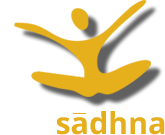The Tandava dance form was originated by Lord Shiva. Lord Shiva has been credited with many dance forms; of these foremost is Tandava dance. According to ‘Shivopasnadak’, Shiva after killing the demon ‘Tripurasur’ went into rapture (ullas) and danced. This dance form was re-enacted by his disciple, ‘Tandu’ Muni who popularized it. This dance form, practised by Tandu Muni, came to be known as ‘Tandava’. This dance form involves expressions reflecting Courage (Veerta), Extreme anger (Roudra), Hatred (Vibhatsa), Enjoyment (Anand) and Anger born out of grief and sympathy (Karuna Janit Krodh). To express these rasas, tne dancer twists his limbs aggressively, which is not considered appropriate for the women. In the course of this dance, the fire of anger seems to peak, the earth seems to tremble as if the whole world is going through a process of destruction.
‘Tandava’ dance form has seven sub-classifications :
- ‘Tripur Tandava’: The dance performed by Lord Shiva after killing the demon Tripurasur reflected Courage (Veerta) and Extreme anger (Roudra) and is known as ‘Tripur Tandava’. The ‘Bols’ of this dance form are mostly in ‘Adi Laya’.
- ‘Anand Tandava’ : After Shiva had slayed ‘Tripurasur’, Goddess Uma performed ‘Lasya’ dance which is an embodiment of Pleasure (Ullas) and Excitement (Umang) which pleased the angry Shiva. This dance is known as ‘Anand Tandava’.
- ‘Gauri Tandava’: In this dance form, Shiva and Parvati dance together in ‘Shringar Rasa’.
- ‘Kalika Tandava’: In order to destroy evil and wicked, Shiva dances expressing his Bhairav form, which is known as ‘Kalika Tandava’.
- ‘Sandhya Tandava’: After the death of his wife ‘Sati’, Shiva carried her dead body on his shoulders and danced while in mourning. This dance starts with Karuna Rasa and ends with expressing Roudra (Extreme anger) and Bhayanak Rasa (Terrible). This dance form is known as ‘SandhyaTandava’.
‘Uma Tandava’ : This dance form stresses the conjugal affection, love and attraction in its purest and simple form.
‘Samhar Tandava’ : The destruction of entire universe is reflected in ‘Samhar Tandava’
The instruments played in Tandava are ‘Nada Pradhan’ (Percussion instruments) with echo effect, as if surrounding and enveloping entire environment; e.g. Ghariyal, Jhanjh, Dumroo, Mrudang, Chang, Dhausa, Naubat etc.
The appropriate costume for Tandava performance is usually ‘Male’ dress i.e. the dancer ties his hairs like a Jata (Bun) showing half moon and river Ganga and wears an ‘Angvastram’ akin to the lion skin worn by Lord Shiva. The dancer applies ‘Tripunda’ (a Shaiva sign) on his forehead, takes Trident in one hand and Dumroo in the other. He also applies Bhasmi (Ashes) on his body.

